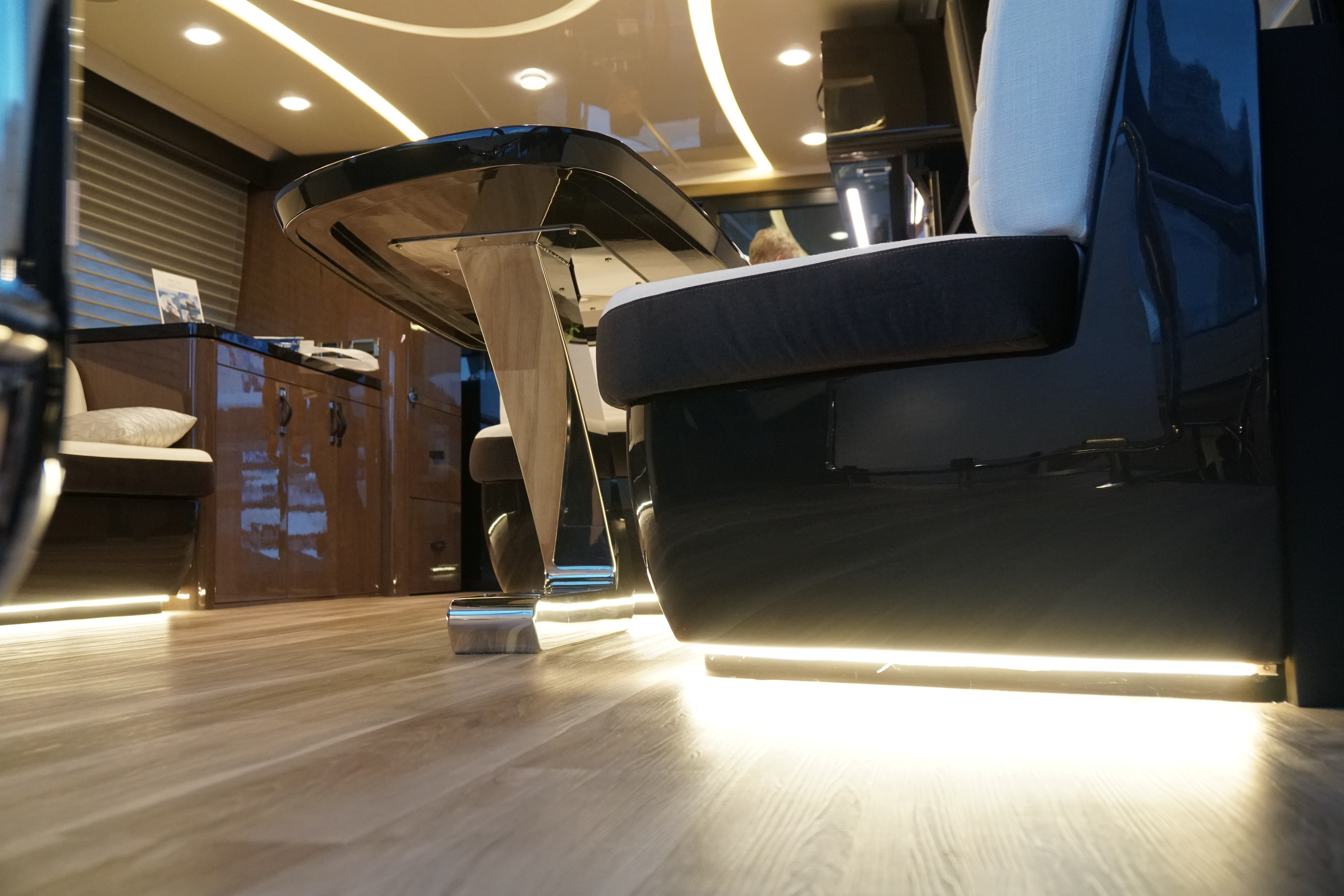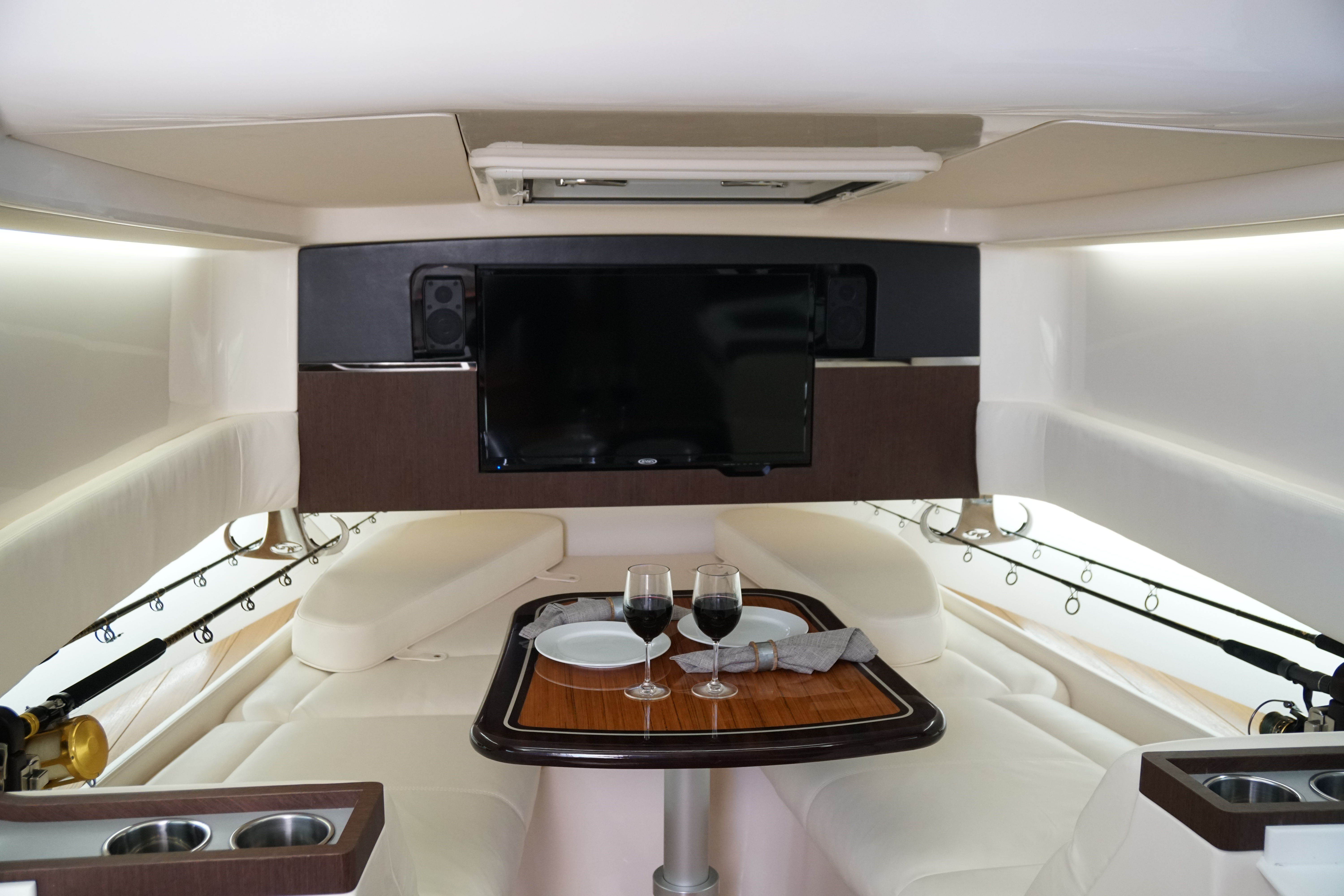Base
Troubleshooting Common Issues with LED Lighting
Troubleshooting Common Issues with LED Lighting
Boat owners generally have no problems with LED lights on their boats. However, encountering a circuit of LED lights that hum or flicker can be frustrating. Troubleshooting and resolving the root cause of these issues can be challenging. In this article, Imtra’s Technical Support Engineer, Van Noorden, shares some troubleshooting tips to help expedite the process of finding and fixing any problems with your LED lights.
Common Problems With LED Lighting: Questions to Ask Yourself
Here are some of the most frequently encountered problems with LED lighting and some questions to consider when troubleshooting.
Do You Have the Right Dimmer for Your Lights?

The most common issue that arises is an LED lighting circuit that starts to flash or flicker when dimmed. Fortunately, this problem is usually a result of the dimmer being incompatible with the light fixtures or bulbs. Boat owners often replace old halogen bulbs with LED bulbs in the same fixture, which is usually a smooth transition with just an on/off switch.
However, introducing a dimmer can lead to complications. LED bulbs are dimmed using a process called pulse width modulation (PWM), where the diodes rapidly turn on and off to control brightness. In contrast, halogen bulbs are dimmed by varying the electrical current flowing to the lights.
When a dimmer designed for halogen dimming is used with LED bulbs or fixtures, the LEDs don’t respond in the same way as halogen bulbs, resulting in flickering or humming. The solution is simple: obtain the proper dimming module for your specific LED lights. Manufacturers typically provide guidance on the compatible dimmers for their products.
>>> Read more: LED Lights: A Green Revolution in Lighting Design
Is the Issue Correlated with Other Onboard Equipment?

Another common problem occurs when LED lights function correctly until another piece of equipment is turned on, causing the lights to hum or flicker. This issue is often caused by Electro Magnetic Interference (EMI).
LED lights are active electronic circuits that emit electromagnetic energy to some degree. Therefore, any other electronic circuit on the boat has the potential to cause EMI. We previously discussed how to avoid interference between LEDs and VHF radios. However, pumps, motors, compressors, inverters, generators, radars, galley appliances, and navigational electronics can all generate EMI that affects LED lights.
If your lights experience issues when another device is turned on, it’s likely that a component in the lighting circuit is too close to the problematic device or that the wiring between the two circuits lacks proper spacing or gauge. Identifying the root cause often involves trial and error of removing or relocating components from each circuit and testing them individually.
Is the Issue with the LED Lights Constant?
If the issue with your LED lighting circuit persists regardless of other equipment onboard, a few additional steps can help narrow down the cause. First, consider whether the lights have always had this issue or if it recently emerged.
If the problem has been present since the lights were installed, it could be as simple as a loose connection or a wire that was damaged during installation. It could also be related to constantly operating electric equipment onboard, similar to the examples mentioned earlier.
If the issue arose suddenly, even after the lights worked well for some time, consider whether any new electric equipment was installed. If so, try shutting down the equipment to see if the problem persists.
If the issue continues or no recent electrical work has been done, it’s possible that a component within the system is faulty or has failed. To identify the faulty component, systematically break down the circuit and test each part individually. The steps below provide an example for a lighting circuit with multiple lights wired to a dimmer and switch.
Step 1: Disconnect the lights from the dimmer and test them with a known good source of power directly. If all lights illuminate at full intensity, the lights and wiring are confirmed to be working properly. If lights at the end of the wiring run are less intense or flickering, it may indicate a wiring or termination issue. Ensure the appropriate wiring gauge is used to avoid voltage drop over the length of the run. Test any individual light not behaving as expected on its own.
Step 2: Test the dimmer by verifying the wiring according to the specific dimmer instructions and using the proper switches. Improper switching wiring is a common issue. Disconnect the switch(es) from the dimmer and simulate switching actions using a bent paper clip on the relevant input terminals. If the dimmer behaves as expected now but didn’t before, it may indicate switch or switch wiring issues. If multiple switches are involved, test each set of switches individually.
Step 3: If the dimmer is powered by an AC/DC converter, disconnect it from the converter and power it directly from a known good source of DC power. If it functions correctly in this state but not when connected to the AC/DC converter, it may be picking up AC noise. Consider using a different model AC/DC converter or adding a DC/DC converter with better AC noise/ripple filtering.
>>> Follow us to find out more about the best LED boat lights exterior
FAQs
What are the most common issues with LED lighting, and how can I troubleshoot them?
Common LED lighting issues include flickering, dimming, color inconsistencies, and sudden failures. Troubleshoot by checking connections, ensuring compatible dimmer switches, examining power sources, and inspecting the fixture or bulb for damage.
Why do my LED bulbs flicker, and what steps can I take to resolve the issue?
LED bulb flickering can be caused by incompatible dimmer switches, loose connections, or low-quality bulbs. To resolve it, try using a compatible dimmer, securing connections, or replacing low-quality bulbs.
How do I troubleshoot dim LED lights in my fixtures?
Dim LED lights may result from insufficient power, incorrect voltage, or damaged components. Troubleshoot by verifying power sources, checking for voltage issues, and inspecting the fixture or bulb.
What are some electrical problems that can affect LED lighting, and how can I identify and fix them?
Electrical issues like short circuits or damaged wiring can affect LED lighting. To identify and fix them, examine the wiring, replace damaged components, and ensure proper grounding.
Can you explain the typical causes of LED lighting problems, such as color temperature inconsistencies?
Color temperature inconsistencies may occur due to variations in LED manufacturing. To address this, purchase LEDs from reputable manufacturers and use bulbs with consistent color temperature ratings.
Are there any maintenance tips to prevent common issues with LED lighting fixtures?
Regularly clean fixtures and check for loose connections. Replace bulbs with compatible models, and avoid overloading circuits to prevent common LED lighting issues.
What should I do if I experience frequent LED bulb burnouts, and how can I prevent them?
Frequent LED bulb burnouts may result from overloading circuits or using low-quality bulbs. Prevent them by using quality LED bulbs and ensuring your electrical system can handle the load.
How can I diagnose and address issues with LED lighting that suddenly stopped working?
If LED lighting suddenly stops working, check the power source, inspect for damaged components, and test the circuit breaker or fuse. Replace or repair faulty parts as needed.
Are there compatibility issues between certain LED bulbs and fixtures, and how can I ensure a proper match?
Yes, compatibility issues can occur. To ensure a proper match, consult the fixture’s manual, buy LEDs compatible with your fixture, and verify voltage and base types before installation.
What are the safety precautions I should take when troubleshooting LED lighting problems, especially in outdoor or wet environments?
When troubleshooting LED lighting in outdoor or wet environments, prioritize safety by turning off power sources, using appropriate personal protective equipment, and ensuring fixtures are properly sealed to prevent water ingress. If uncertain, consult a professional electrician.
>>> Follow us to view more best boat light to buy
Conclusion
If you’ve asked yourself these questions and still find yourself stumped by your LED lighting issues, it’s time to consult an expert. Tracking down problems with humming or flickering LED lights can be challenging, so it’s often best to contact an ABYC certified technician or experts like those at Imtra.
